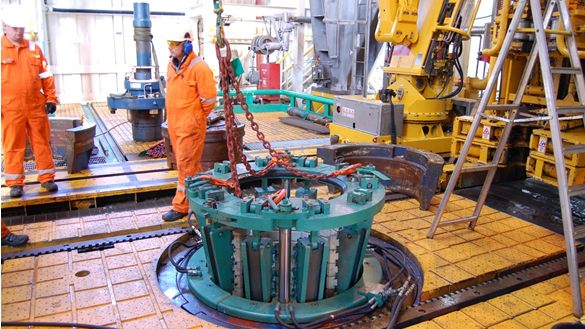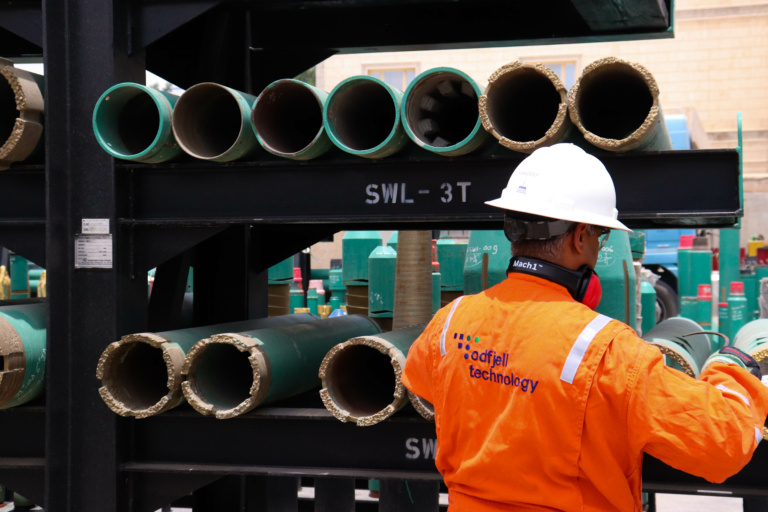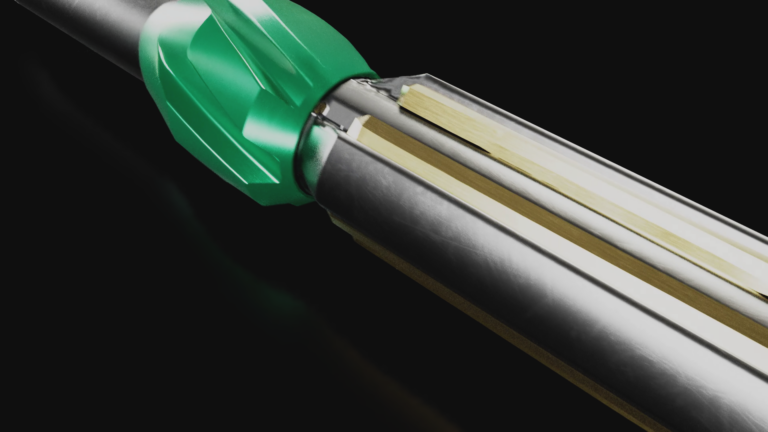Consider the Crushing Factor when Setting Casing Slips
The crushing factor is the weight of the casing string in relation to the yield strength of the pipe. It suggests that you need more area of impact from the dies when the string gets heavier. This should be calculated by the drilling planner and it determines the type of pipe to be used.
Casing slips load rate
Each casing slips segment have a theoretical load rate of 25 tonnes. Although vital to run safely, we know that this is not always common knowledge. Even experienced drillers need to be reminded from time to time. There is not uncommon to see strings exceeding the load rate with a hundred tonnes. This is because the pipe manufacturers specs the pipe with a lot of headroom. If you don’t know exactly what you are doing, this can be a dangerous gamble. An excessive extension of the load rate might lead to either
- crushed pipe, or
- breaking the slips
For a 10 3/4 ” slips with 15 segments, this simple calculation determines maximum string weight:
15*25 tonnes = 375 tonnes
Handle the heavy string
In my opinion, the safest bet when handling a heavy string is a Flush Mounted Spider. The FMS is easily adapted to the various models of rotary tables on the market. You pull out the Master Bushings and replace them with the FMS.
With normal hand slips, the weight rate is typically limited to the crush load of the pipe. Some FMS can go up to 1000t, so when it comes to high string-weight jobs, the Flush Mounted Spider is what you will look for. (You will also look for a driller that runs very slowly when the heavy string is set off. A string that is “thrown” into the rotary puts huge forces on the slips and the OD of the pipe). With an FMS installed you’ll also remove the need for a slips lifter.
> Read also: Efficient drill floor handling with Flush Mounted Spider
Talking about slips lifter: For a hands free operation of slips, the OWS-patented Remote Operated Slips Lifter with Integrated Safety Clamp is a valuable option on lighter strings.
A word about dies
The important connection in this case is the area of impact between the dies and the pipe. When the bowls get worn, the distribution of impact to the pipe decreases. The force now is concentrated on less area. The pipe needs support from the hole length of the dies. That ensures even distribution of forces and prevent slipping or increased yield stress.
Keep additional dies and change them continiously to keep within the limits of load rate and crushing factor. Functional dies must regularly be removed from the slips segment to be cleaned and greased.
Topics: Casing Running, TRS
By: Jan Willem Gundersen
Jan Willem is an experienced casing operator who have been with the company since 1982. He specializes in manual and automated pipe handling. He is now Operation Assistant Norway.



